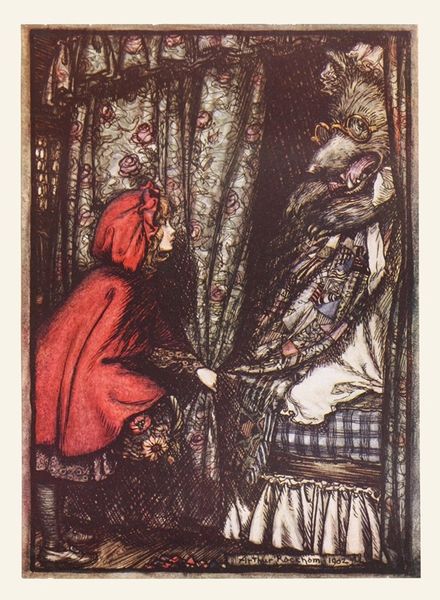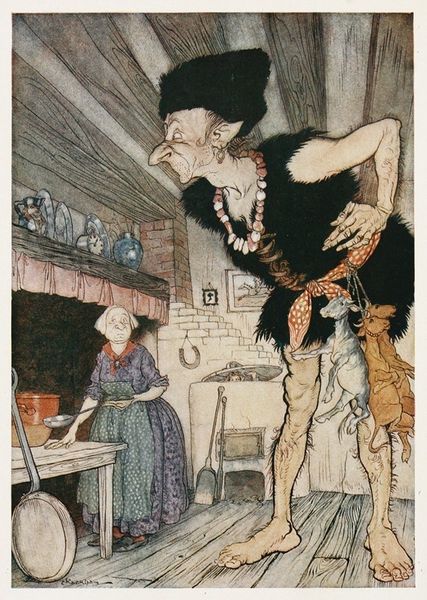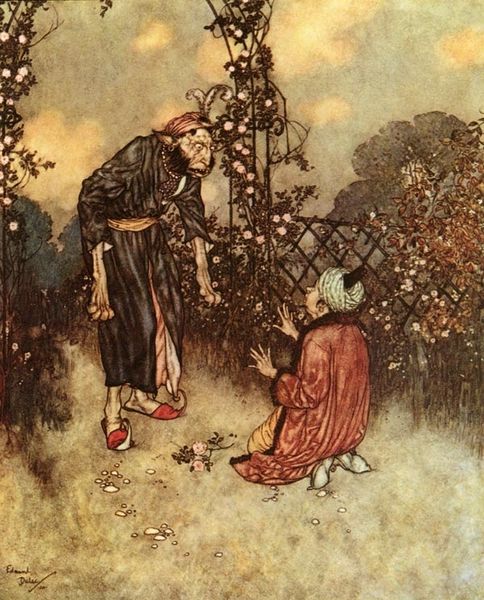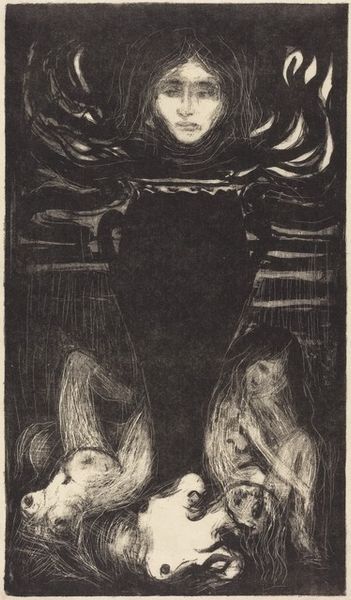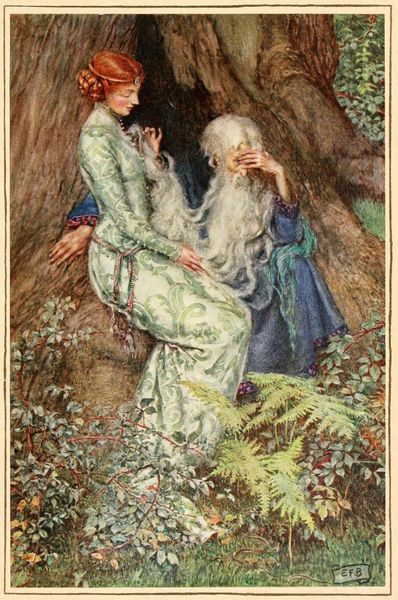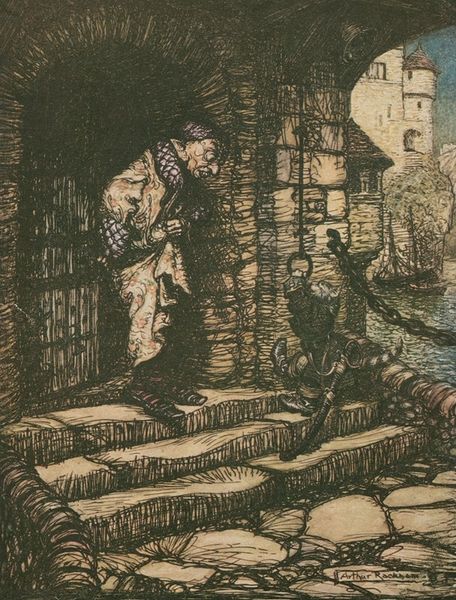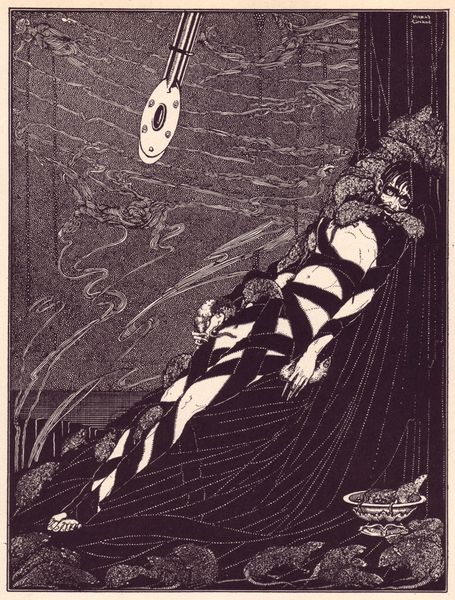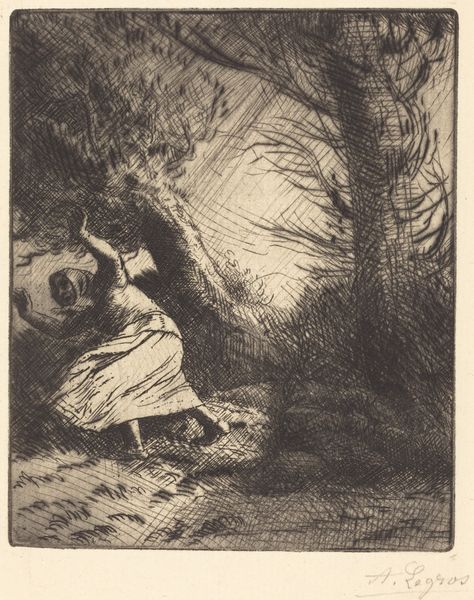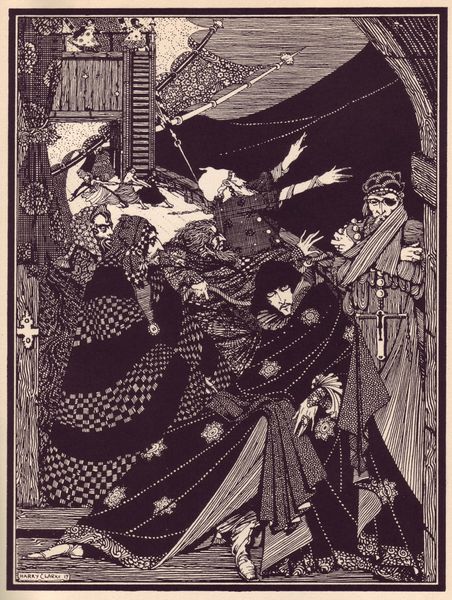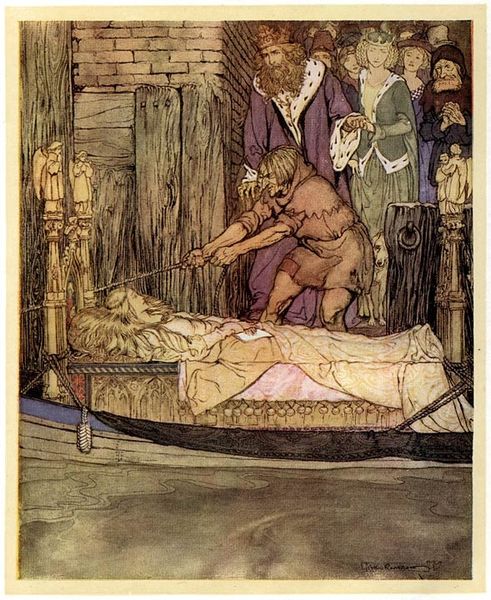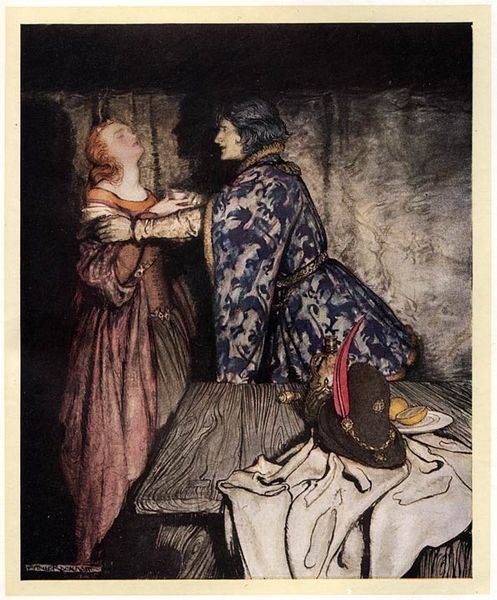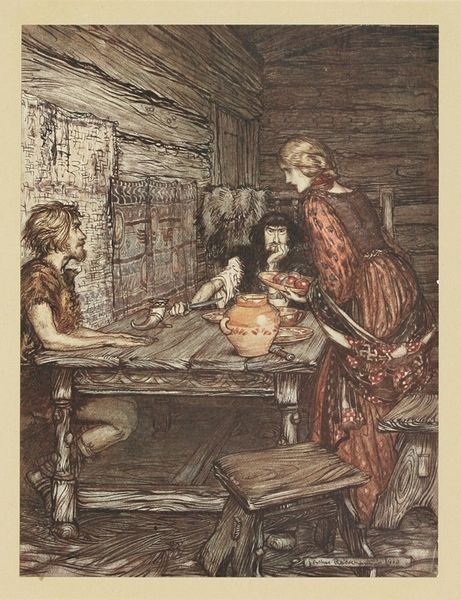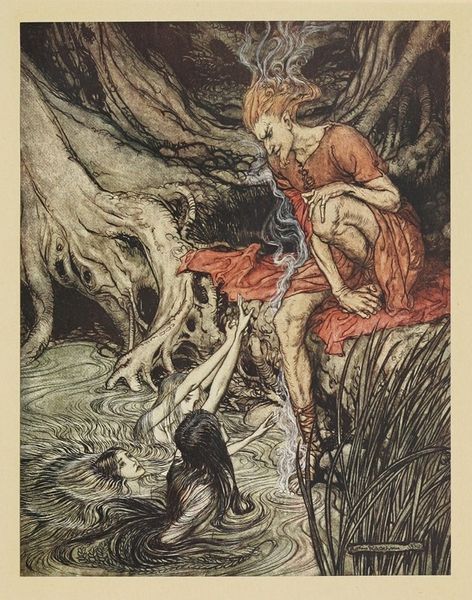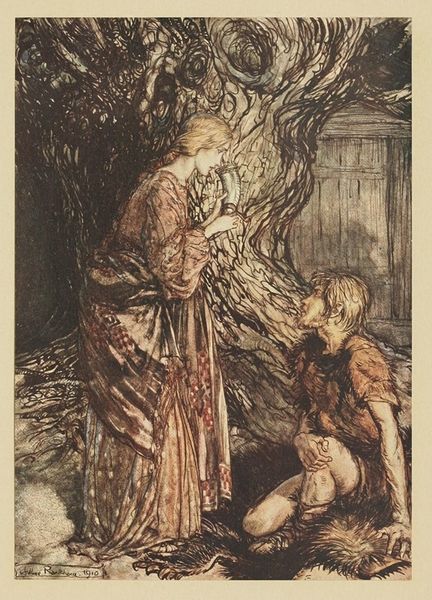
At last she reached the cellar, and there she found an old, old woman with a shaking head 1920
0:00
0:00
Copyright: Public Domain: Artvee
Editor: Here we have Arthur Rackham’s "At last she reached the cellar, and there she found an old, old woman with a shaking head," created in 1920 using ink and watercolour on paper. There's a distinctly dark, almost foreboding mood to the scene, amplified by the dense linework. What are your thoughts on it? Curator: The medium itself speaks volumes. Ink and watercolor, materials readily accessible and relatively inexpensive, situate this image within a specific mode of production, particularly for illustration. Rackham's choice of paper, and its probable mass manufacture, democratizes the distribution of this narrative, contrasting sharply with the historically rarefied world of fine art. Consider how these choices affected who could own and experience art at this time. Editor: That's an interesting angle. I was focusing on the fairy-tale elements, but it's true, this brings the story to a much wider audience. Does the technique itself—the way the ink is applied, for instance—suggest anything about that democratized distribution? Curator: Absolutely. Note the density of the ink hatching, the way he builds form and shadow through labor-intensive mark-making. This highlights the skilled hand behind the image, yes, but also hints at the repeatable, almost mechanical, nature of printmaking techniques that would disseminate these images. And then observe the touches of watercolor, selectively applied, suggesting the potential for hand-coloring in some iterations, further complicating the divide between mass production and individualized artistry. What might these nuances tell us about consumption and value at the time? Editor: So, it's not just the availability of the image, but also how the production methods blur the lines between fine art and popular culture? It's making me reconsider the whole idea of 'high' versus 'low' art of the era. Curator: Precisely. Rackham's drawing compels us to look at the economic and social structures that shape our understanding of art. Think about how the labor and materiality involved influenced both its creation and reception. Editor: I will! This focus on materials gives the image a completely new meaning, shifting it from pure storytelling to something about production, access, and social value. Thank you.
Comments
No comments
Be the first to comment and join the conversation on the ultimate creative platform.
